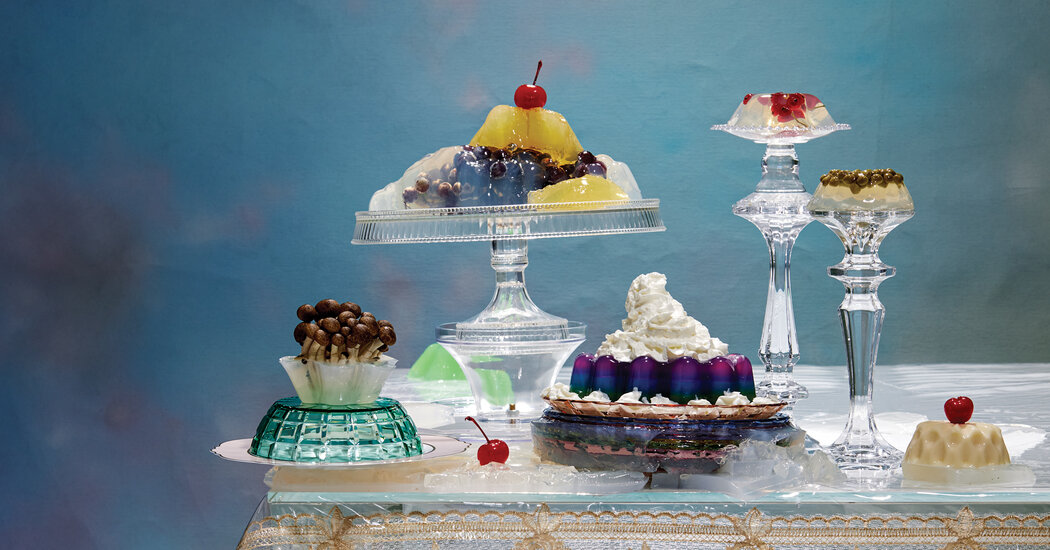
Nevertheless, as recorded in an archive of oral histories collected by the Ellis Island National Museum of Immigration, those seeking refuge in America were often mystified, even unnerved, by this supposed exemplar of the national cuisine. “Oh, it shivers,” one teenager from Ukraine, then suffering through a famine that may have claimed as many as two million lives, recalled of encountering the dessert in 1923. Another, who had fled wartime France in 1941, was still haunted decades later by the traumatic memory of Jell-O, saying, “When I saw it, I got sick, that wobbly thing. It was terrible. I said, ‘Put it away.’ I couldn’t even look at it.” Others echoed a sense of disorientation: “We were afraid to eat it”; “hardly anyone touched it.” Undaunted, the Ellis Island administrators dispensed ridged aluminum molds (with the Jell-O brand name prominently embossed) to those fortunate enough to make it through the system so they could recreate the oscillations when they settled into their new homes.
For these immigrants, Jell-O was an encounter with the unfamiliar. Although gelatinized dishes had long been part of European food culture, until the late 19th century, “making a reliably clear, firm and successful jelly from basic ingredients remained a challenge for most everyday cooks and housewives,” the British food historian Peter Brears writes in “Jellies and Their Moulds” (2010). It took advances in science and technology to develop gelling agents that were fast acting and inexpensive, and the hustle of capitalism to turn them into household essentials. Jell-O — the name of both the granulated gelatin product and the dessert it made — was a portent of a new way of not only cooking but living.
In this it had the sheen of artifice, which may also explain some of the unease it inspired. Jell-O verged on the unnatural in the impeccable smoothness of its surfaces, bearing no trace of the forces that went into its creation, as if sprung forth from the packet fully formed without a cook’s intervention. Arguably, it falls into the category of what the French literary theorist Roland Barthes, in his 1957 essay collection, “Mythologies,” identifies as a kind of “ornamental” cooking that “is based on coatings and alibis, and is for ever trying to extenuate and even to disguise the primary nature of foodstuffs” — namely, the “brutality” of food, which is to say, the animal need for it and the violence and toil that go into procuring and making it. Consider that 10th-century ur-jelly, qaris: The Iraqi food historian Nawal Nasrallah notes in the 2007 edition of “Annals” that one dinner guest was scandalized to learn that 150 tongues had been harvested to make the dish, although it was the cost of the ingredients that sparked outrage, not the wastefulness of sacrificing so many fish for a single meal, or the labor expended in pursuit of such an ephemeral pleasure. Blancmange, a pale almond-and-chicken stew that by the 18th century had drifted into the sweets category and evolved into a shyly quaking milk pudding, is similarly delicate and soothing, qualities that were historically made possible by hartshorn, shavings from severed deer antlers, or isinglass, dried swim bladders plucked from fish.



